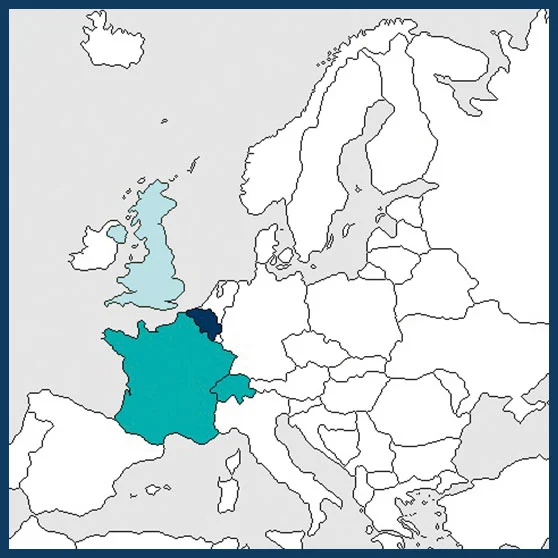03-2017 to 02-2020
€ 880,613
Prof. Koen SABBE
koen.sabbe@ugent.be
Ghent University, Ghent, BELGIUM (Coordinator)
Muséum National d’Histoire Naturelle, Paris, FRANCE
Université de Nantes, Nantes, FRANCE
Ecole Polytechnique Fédérale de Lausanne, Lausanne, SWITZERLAND
University of St-Andrews, St-Andrews, UNITED KINGDOM

The functioning of marine and coastal ecosystems is partly sustained by the key role played by tidal sand- and mudflats. They contribute to the support and well- being of coastal fish and shellfish populations, as well as the protection of coastal inland areas from sea-level rise and storm surges. Natural key elements are a precious tool to minimise or avoid climate calamities and represent an important ecological and economical asset that needs to be further analysed and protected.
The productivity of these ecosystems is largely driven by highly diverse microbial biofilms inhabiting the tidal flat sediments. However, the precise relationship existing between their diversity and functioning is little understood.
The main aim of the project is to study the relationship between microbial biodiversity and important ecosystem functions in tidal flats. The focus will be on functions related to the carbon cycle (photosynthesis by microalgae, mineralisation by bacteria and grazing by animals) and its relations with living organisms by contrasting tidal flat environments (sand vs. silt) in the explicit context of biotic interactions.
Throughout two large-scale experiments in both France and The Netherlands, a description of the relation between microbial biodiversity and the essential functions of these ecosystems, such as fuelling of coastal food webs, including commercial fisheries and shellfish farming, driving carbon fluxes across the sediment- water interface, and stabilising sediments, will be provided. This description will be established through the use of a combination of state-of-the-art molecular, tracers and imaging experiments to follow carbon throughout the food web.
Laboratory experiments will be used to unravel the mechanisms underlying the observed relationships. Following these observations, models to describe the tidal flat carbon flux will be built to obtain a more explicit view of the phenomenon. Finally, remote sensing will be used to study biodiversity-ecosystem function relationships at the scale of whole tidal flats.
Our results will be highly relevant to policy makers, consultancies and companies (e.g. dredging) involved in integrated coastal zone management, and private stakeholders exploiting the tidal flat ecosystem (e.g. oyster farmers). Stakeholders will be informed and involved in dedicated meetings at all stages of the project, and parts of the project will be jointly carried out with stakeholders (e.g. experiments on the relevance of oyster feed diversity on their growth). Results will be disseminated during meetings, and in popular science articles, posters and brochures aimed at schools and the general public, and hands-on demos (e.g. during the annual ‘Week of the Sea’ science festival in Belgium).